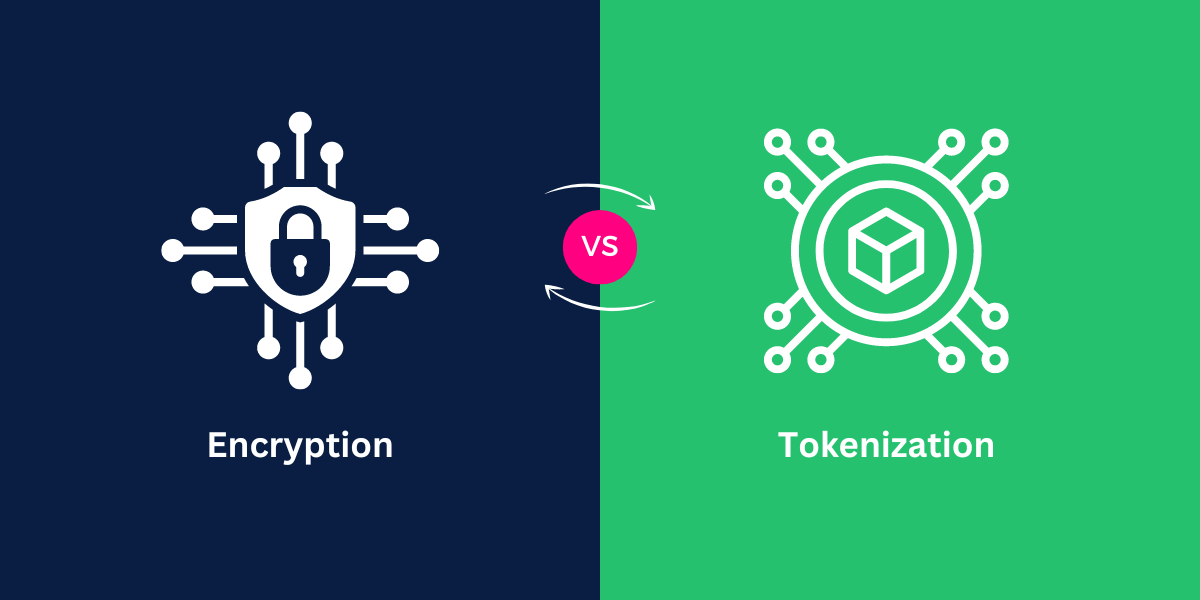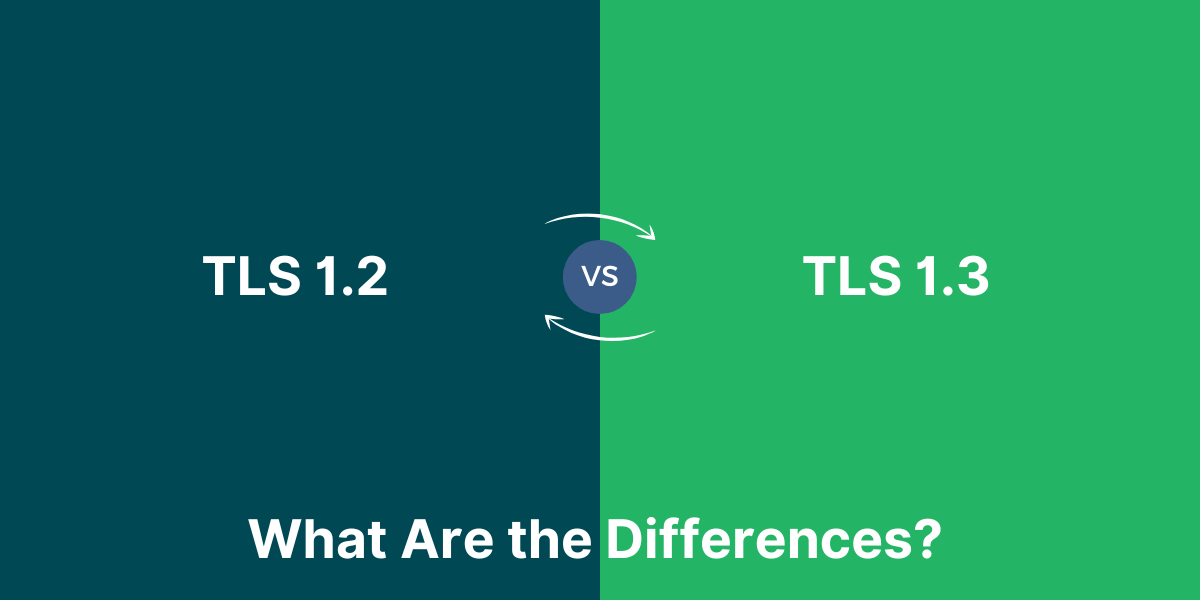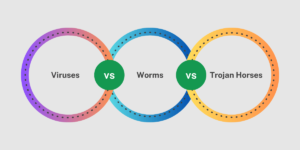What are the Difference Between Encryption and Tokenization?
In the digital age, the protection of sensitive information has become paramount. Two commonly used techniques in this endeavor are encryption and tokenization. While both aim to safeguard data, “Encryption vs Tokenization?” reveals distinct differences in their approach and applications.
Encryption transforms data into a coded format, ensuring its confidentiality during transmission or storage. Tokenization, on the other hand, replaces sensitive information with a non-sensitive placeholder, known as a token, without altering the original data.
Understanding these nuances is crucial for businesses and individuals to select the most suitable data security solution for their needs.
Key Takeaways
- Encryption and Tokenization are both data security techniques but work differently. Encryption scrambles data to make it unreadable without a key. Tokenization replaces data with random tokens or references.
- Encryption provides strong protection but requires managing keys. Tokenization doesn’t require keys but provides weaker protection, especially for smaller data sets.
- Encryption is better for securing highly sensitive data like passwords, health records, financial data, etc. Tokenization is ideal for protecting less sensitive data like names, addresses, and card numbers.
- Tokenization enables better analytics on protected data than encryption. It also allows integrating systems that can’t handle encrypted data.
- Many compliance regulations like PCI DSS allow both encryption and Tokenization. However, rules for healthcare and financial data often mandate encryption over Tokenization.
- Using encryption and Tokenization together provides layered security. Encrypt sensitive data and tokenize the encrypted output for usability.
A Head to Head Comparison Between Encryption vs Tokenization
|
Feature |
Encryption |
Tokenization |
|
Data Protection |
Encrypts the original data, making it unreadable to unauthorized parties. |
Replaces the original data with a unique identifier (token) that has no inherent value. |
|
Reversibility |
Encrypted data can be decrypted using the correct key, revealing the original information. |
Tokenized data cannot be reversed to the original form without the proper token mapping system. |
|
Storage Requirements |
Encrypted data typically has the same size as the original data. |
Tokenized data is usually smaller than the original data, reducing storage requirements. |
|
Performance Impact |
Encryption and decryption can impact system performance, especially for large amounts of data. |
Tokenization has a lower impact on system performance, as the token substitution process is generally faster. |
|
Security Level |
The level of security provided by encryption depends on the algorithm and key strength used. |
Tokenization provides an additional layer of security by removing the actual sensitive data from the system. |
|
Compliance |
Encryption may be required for certain regulatory compliance standards (e.g., PCI DSS, HIPAA). |
Tokenization can help organizations meet compliance requirements by eliminating the need to store sensitive data. |
|
Flexibility |
Encrypted data can only be used for its intended purpose and cannot be easily modified. |
Tokenized data can be used for various purposes, such as analytics, without compromising the original sensitive information. |
|
Data Sharing |
Encrypted data can be shared, but the recipient must have the correct decryption key. |
Tokenized data can be shared more easily, as the tokens can be used without revealing the original sensitive information. |
|
Key Management |
Encryption requires secure key management, which can be complex and resource-intensive. |
Tokenization relies on a token mapping system, which is generally easier to manage than encryption keys. |
|
Usability |
Encrypted data is not directly usable and requires decryption before use. |
Tokenized data can be used directly, without the need for decryption, making it more user-friendly. |
How Encryption Works?
Encryption is the process of encoding or scrambling data using cryptographic techniques. It converts plain text data like names, account numbers, messages, etc., into an encrypted form called ciphertext. Encrypted data appears scrambled and unreadable to unauthorized parties.
The main components involved in encryption are:
- Plaintext: The original sensitive data to be protected.
- Encryption Algorithm: The mathematical function used to encrypt the data. Popular algorithms include AES, RSA, Blowfish, etc.
- Encryption Key: A value fed to the algorithm along with data to encrypt it.
- Ciphertext: The encrypted output generated by the algorithm using the key.
To encrypt data, the encryption algorithm takes the plaintext data and encryption key as input. It transforms the plaintext to ciphertext based on the algorithm’s logic. The ciphertext output looks like a stream of unintelligible characters.
Decrypting the ciphertext requires feeding the encrypted data and a decryption key back to the algorithm. The algorithm transforms the garbled ciphertext back to the original plaintext.
Encryption keys play a pivotal role here. Only those with access to the right decryption key can decrypt the ciphertext. Without the key, the encrypted data remains scrambled and unusable.
Encryption provides very strong security for data. The protection strength depends on factors like:
Proper implementation of encryption can make it mathematically impossible to crack the ciphertext without large amounts of computing power. This makes encryption suitable for storing highly confidential data like passwords, financial information, intellectual property, etc.
How Tokenization Works?
Tokenization is a non-mathematical approach to protecting data. It works by replacing sensitive data values with non-sensitive substitutes called tokens, which act as references to the original data.
The tokenization process consists of these steps:
- A database stores the original sensitive data such as names, IDs, numbers, or text.
- When an application needs to access the stored data, the tokenization algorithm generates a random token to represent the real data.
- The token is returned to the application instead of the actual data. Tokens appear as randomized, meaningless strings.
- The tokenization system stores a mapping of tokens to the related data values in a secure token vault.
- When needed, the vault’s detokenization process swaps the tokens back for real data.
Unlike encryption, Tokenization doesn’t alter the original data. The data persists in its original usable form in the database. This makes Tokenization more application-friendly and analytics-ready than encryption.
Tokenization is often called “format-preserving” since tokens look similar to original data. For example, tokenizing the credit card number 5105-1051-0510-5100 might output 8596-3035-7845-1369. This numeric format allows tokenized data to be passed to other systems and used in analytics.
The Security of Tokenization Depends on Factors
- Randomness: More randomness in token generation enhances security.
- Token vault: The token vault must be securely protected.
- Data volume: Tokenization is weaker for smaller, unique data sets.
Tokenization provides adequate security for large volumes of varied data like customer names. However, it is ill-suited for small or unique data like government IDs, passwords, or financial account numbers.
Encryption vs. Tokenization: The Key Differences
Now that we’ve seen how encryption and tokenization work let’s directly compare the two techniques in various aspects:
Protection Mechanism
- Encryption alters data itself using mathematical algorithms. This provides inherent protection even if encrypted data is stolen.
- Tokenization substitutes data with tokens using lookups. The protection relies on securing the token vault. If that is compromised, so is the tokenized data.
Data Usage
- Encrypted data is scrambled and unusable for analytics or other functions unless decrypted. Therefore, applications that work with encrypted data are required.
- Tokenized data retains its original format and can be used in downstream systems, analytics, etc. Tokens are application-friendly.
Key Management
- Encryption requires securely generating, distributing, and storing secret keys. Key management is complex, especially at scale.
- Tokenization does not use keys. Easier to implement, but the token vault must be securely protected.
Performance Impact
- Encryption is computationally intensive, especially strong algorithms. It can degrade the performance of applications/systems.
- Tokenization has minimal performance overhead since it just substitutes data. Better suited for performance-critical systems.
Protection Strength
- Encryption provides very strong protection capable of securing highly sensitive data like passwords. Protection strength grows exponentially with key size.
- Tokenization provides weaker protection that relies on token randomness and vault security. Better for less sensitive data like customer names or addresses.
Analytics Support
- Encrypted data is gibberish and unusable for analytics or functions. Analytics requires decrypting, which comes with key management overheads.
- Tokenized data retains format so that analytics can be run on tokens with minimal changes. Enables analyzing protected data.
Cost
- Encryption has lower direct costs since most algorithms are open standards. However, there are indirect expenses for key management and IT infrastructure.
- Tokenization requires purchasing solutions from vendors. However, it’s easier to implement with minimal changes to systems and processes.
Compliance Support
- Encryption is mandated by most data security regulations like HIPAA, GDPR, and PCI DSS that govern healthcare, financial, and card data.
- Tokenization is permitted for compliance in many cases, but some regulations mandate encryption for highly sensitive data types.
Use Cases
- Encryption is ideal for strongly protecting confidential data like passwords, PII, PHI, intellectual property etc.
- Tokenization suits use cases like masking PII in test/dev data, enabling analytics on protected data, and integrating with third-party systems.
Encryption and Tokenization Together
Encryption and Tokenization provide complementary strengths when implemented together:
- Encrypt highly confidential data like financial information and intellectual property first.
- Then, tokenize the encrypted data to enable usability and analytics.
- This provides a layered security approach: encryption for strong protection and Tokenization to unlock usage and portability.
- Even if tokens are compromised, the encrypted data remains securely protected.
Consider payment card data, which contains highly sensitive cardholder information. Many organizations:
- Encrypt the card number and CVV code data for strong protection.
- Tokenize other card data like expiration date, name, and address to enable business functions.
- This balances security and usability for comprehensive payment card data protection.
Similarly, for medical records containing sensitive Personally Identifiable Information (PII):
- Encrypt direct patient identifiers like name, SSN, MRN, and account numbers.
- Anonymize the encrypted data by tokenizing the date of birth, zip code, diagnosis codes, etc.
- Securely share anonymized medical data with researchers and healthcare partners for analytics and insights.
What are the Best Practices for Implementation
Here are some best practices to follow when implementing encryption and Tokenization:
For Encryption
- Classify data sensitivity to determine what data requires encryption. Avoid under/over encryption.
- Select reputable, industry-tested encryption algorithms like AES, RSA, etc., based on encryption needs.
- Use keys of sufficient length (at least 128-bit, 256-bit optimal). Rotate keys periodically.
- Securely generate, exchange, and store keys to prevent unauthorized access. Use hardware security modules (HSMs) where possible.
- Manage encryption across the data lifecycle, including key provisioning, rotation, and destruction.
- Integrate encryption tightly into applications and systems to minimize performance impact.
For Tokenization
- Define a consistent token format based on the type of data tokenized.
- Generate tokens and mappings randomly without using any predictable patterns.
- Securely store and manage the token vault, which maps tokens to real data. Restrict access only to essential personnel.
- Implement token expiration and rotation policies to refresh older tokens periodically.
- Use format-preserving Tokenization that retains the original data format and properties where possible. This reduces system integration efforts.
- Isolate the token vault from tokenized data stores for greater security.
For Encryption and Tokenization
- Limit tokenized or encrypted data access to only authorized personnel. Never output sensitive data.
- Mask or redact displays of encrypted or tokenized data to hide patterns like credit card numbers.
- Retain links between encrypted and tokenized versions of data to prevent analytic gaps.
- Monitor regulatory compliance needs based on data types and make changes accordingly.
Final Thoughts
Encryption and Tokenization offer complementary strengths when it comes to protecting sensitive data. Encryption provides robust protection by mathematically altering data using keys. However, it requires decryption to restore usability, which adds complexity.
Tokenization directly substitutes sensitive data with non-sensitive tokens while allowing tokenized data to retain utility. However, it offers weaker protection, relying on token randomness and vault security.
Many organizations use hybrid implementation to maximize security, performance, and compliance. They encrypt highly confidential personal data and tokenize less sensitive data from the encrypted output. With sound key management and vault security, this multilayered approach balances strong protection with usability across systems and analytics.
Frequently Asked Questions
Can encryption be reversed?
Properly implemented strong encryption using large keys cannot be reversed or cracked without the decryption key. Brute forcing by trying every possible key is the only way, but it is infeasible for large key sizes.
Does Tokenization require encryption?
Tokenization does not require encryption. However, encrypting data first before tokenizing it provides an added security layer in case tokens are compromised.
Is Tokenization better than encryption?
Tokenization provides weaker security than encryption but enables better usage, analytics, and performance. It is better suited for protecting non-sensitive data like names, addresses, etc. Encryption is mandatory for highly confidential data like financial or healthcare records.
What are the risks of Tokenization?
If the token vault mapping original data to tokens is compromised, tokenized data can be exposed. Other risks include weakness in random token generation and the inability to rotate tokens.
Can tokenized data be decrypted?
Unlike encrypted data, tokenized data cannot be “decrypted” since the original data is not altered. Compromising the token vault can allow linking tokens back to the original sensitive data.
Does Tokenization satisfy compliance regulations?
Most regulations allow Tokenization to protect confidential data, but high-risk data types often mandate encryption. For example, HIPAA requires encryption for patient health records. PCI DSS permits Tokenization for cardholder data.
What is better for performance: encryption or Tokenization?
Tokenization has a lower performance impact than encryption since it does not alter the original data. Encryption’s computational overhead can degrade performance, so it may not suit processing-intensive systems.
Is encrypted data unusable?
Encrypted data is unusable or unreadable without decrypting it first. However, systems can be designed to work with encrypted data for search, analytics, etc., and avoid decrypting.
Can you tokenize after encryption?
Yes, tokenizing data after encrypting it first provides an added layer of security. The encrypted data remains strongly protected even if tokens are compromised. This technique maximizes both security and usability.

Priya Mervana
 Verified Web Security Experts
Verified Web Security Experts
Priya Mervana is working at SSLInsights.com as a web security expert with over 10 years of experience writing about encryption, SSL certificates, and online privacy. She aims to make complex security topics easily understandable for everyday internet users.



